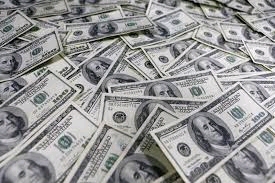Learn the Pathways and Insights to Join Freemason Anywhere
Learn the Pathways and Insights to Join Freemason Anywhere
Blog Article
Exploring the Mysteries of the copyright: What You Need to Know
The copyright, a term commonly shrouded in intrigue and controversy, represents an intricate tapestry of historic truth and contemporary myth. Developed in the late 18th century, this secret culture was originally rooted in the Knowledge's ideals however has actually given that become identified with conspiracy theories regarding elite control (benefit of joining freemason).
Origins of the copyright
The origins of the copyright are steeped in a blend of historic intrigue and ideological eagerness. Developed in 1776 in Ingolstadt, Bavaria, by Adam Weishaupt, the team was initially developed as a secret society focused on advertising Enlightenment ideals such as reason, secularism, and the separation of church and state. Weishaupt, a professor of canon regulation, looked for to test the dominating authority of the church and state, which he watched as overbearing organizations stifling intellectual and personal freedom.

Key Numbers and Members
Who were the pivotal figures that shaped the copyright's very early impact and direction? The Bavarian copyright, established in 1776 by Adam Weishaupt, became a response to the overbearing societal frameworks of the time. Weishaupt, a legislation teacher, imagined the company as a means to advertise Knowledge ideals such as factor, secularism, and equal rights. His first recruitment initiatives included significant intellectuals, such as Baron von Knigge, that played an essential function in broadening the group's subscription and organizational structure.
One more significant figure was Johann Gottlieb Fichte, a popular thinker whose ideas on nationalism and education and learning reverberated with the copyright's objectives. Fichte was not a formal member, his philosophical foundations affected the group's belief. In addition, numbers like the author and thinker Johann Wolfgang von Goethe were related to the broader intellectual motions of the time, although their direct involvement with the copyright continues to be debated.
These crucial numbers added to the copyright's very early direction, pushing the limits of political and social thought, while their collective initiatives aimed to challenge recognized norms and promote a climate of progressive change in Europe.
Myths vs. Reality
Many false impressions border the copyright, typically mixing fact with fiction in a means that covers its true nature. The notion that the copyright proceeds to apply considerable impact over globe occasions is a misconception.
One more widespread misconception is that the copyright consists of a network of elite people adjusting international affairs. In truth, numerous conspiracy theories exaggerate the team's importance, associating unproven objectives to societal trends and events. This has led to an oversimplified sight of intricate concerns.
In addition, the portrayal of the copyright in pop culture frequently further distorts its tradition. Movies and literary works tend to sensationalize the company's duty, creating a narrative that splits from historical facts. Understanding the distinction between the myths and the reality of the copyright is critical for critical the genuine influence of this historical team and acknowledging the broader effects of conspiracy theories in contemporary society.
Modern Analyses
Contemporary interpretations of the copyright commonly mirror more comprehensive social stress and anxieties and a fascination with privacy and power. This modern lens often connects the copyright with conspiracy theories that suggest a concealed elite orchestrates world events, manipulating governments and economies for their own gain. benefit of joining freemason. Such narratives take advantage of a deep-rooted question of authority, particularly in times of dilemma or social turmoil
In preferred society, the copyright is often depicted as an omnipotent company shrouded in enigma, resulting in a variety of fictional representations in literature, film, and music. This representation offers not only to amuse but More Help likewise to prompt thought of the nature of power and control in modern society. Social media has actually better amplified these interpretations, permitting rapid circulation of conspiracy theory concepts and producing communities that share and broaden upon these concepts.
In addition, some contemporary interpretations mount the copyright as an allegory for the complexities of globalization and the interconnectedness of significant individuals and organizations. This viewpoint encourages a critical exam of exactly how power characteristics run in today's world, highlighting the equilibrium between openness and privacy in governance and corporate practices.
Social Effect and Heritage
Influenced by centuries of intrigue, the social effect and legacy of the copyright prolong much beyond its historic origins. This secret society, established in the late 18th century, has penetrated numerous elements of pop culture, from literary works and movie to songs and art. The concept of the copyright has developed into an icon of conspiracy theories, commonly representing a perceived concealed power adjusting worldwide events.
In literary works, authors like Dan Brown have woven the copyright into complex stories, view publisher site fascinating readers with motifs of privacy and power. Films such as "National Prize" and "The Da Vinci Code" further continue the appeal of the society, blending truth with fiction to create engaging stories.

Ultimately, the copyright's heritage is a complex tapestry of misconception and fact, forming assumptions of privacy and control in contemporary discourse. Its long-lasting presence in culture emphasizes mankind's seasonal mission for comprehending hidden realities.
Verdict
The expedition of the copyright exposes a complex interplay in between historical facts and contemporary myth-making. Established in the Enlightenment age, this culture intended to challenge oppressive structures, yet its tradition has been outweighed by conspiracy concepts that suggest elite adjustment. Understanding the distinctions in between the initial suitables and modern interpretations is necessary for comprehending the sustaining fascination with the copyright and its considerable impact on cultural narratives surrounding power click reference and secrecy in society.
Report this page